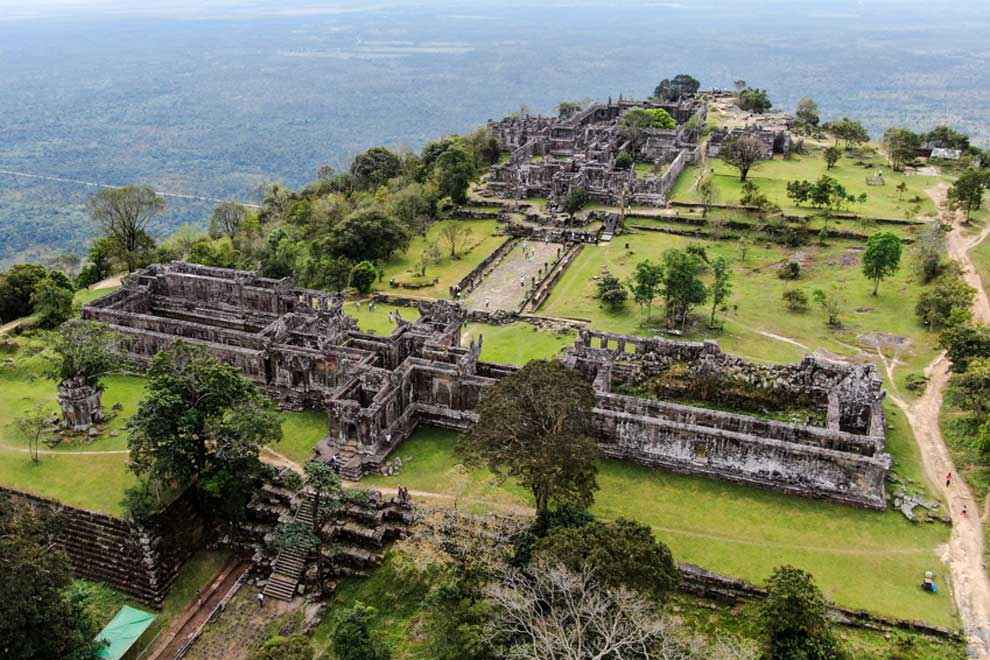
Preah Vihear
The Preah Vihear Temple, or Prasat Preah Vihear, is an ancient Hindu temple built during the Khmer Empire. It's dramatically situated atop a 525-meter (1,722 ft) cliff in the Dângrêk Mountains, in the Preah Vihear province of Cambodia, near the border with Thailand. Its location offers stunning panoramic views across the Cambodian plains.
History:
- Construction began in the early 9th century under King Yasovarman I and continued through the reigns of several kings until the 12th century, notably Suryavarman I and Suryavarman II.
- The temple was dedicated to the Hindu god Shiva in his manifestations as the mountain gods Sikharesvara and Bhadresvara.
1 - Over the centuries, it served as an important place of worship and pilgrimage.
- In the early 20th century, the border drawn by the French placed the temple within Cambodian territory, a point of contention with Thailand.
- After Cambodia gained independence, Thailand occupied the temple, leading to a dispute that was taken to the International Court of Justice (ICJ).
- In 1962, the ICJ ruled that the temple belonged to Cambodia and ordered Thailand to return any removed artifacts.
- In 2008, UNESCO listed Preah Vihear Temple as a World Heritage Site.
Location:
- The temple is located in the Preah Vihear province in northern Cambodia, bordering Thailand and Laos.
- It sits on the edge of a plateau in the Dângrêk Mountains, offering a strategic and visually impressive location.
- The closest town in Cambodia is Sra'em, about 30 km away.
- Access was historically mainly from the Thai side, but now Cambodia allows access.
Architecture:
- Unlike most Khmer temples oriented towards the east, Preah Vihear has a unique layout along a long north-south axis, stretching about 800 meters. This design follows the natural slope of the mountain.
- The temple complex comprises a series of sanctuaries connected by pavements and staircases.
- Key architectural features include five gopuras (entrance pavilions) with intricate carvings depicting Hindu mythology, long causeways adorned with naga balustrades (mythical serpent railings), courtyards, galleries, and the main sanctuary at the southernmost, highest point.
- The architecture showcases several styles from different periods of construction, including elements reminiscent of Koh Ker and Banteay Srei.
- The carvings and ornamentation are considered outstanding examples of Khmer artistry, displaying symmetry, finesse, and detailed depictions of deities like Shiva, Vishnu, Indra, and Krishna.
- Locally sourced gray and yellow sandstone was the primary building material, with wood and terracotta tiles used for roofing.